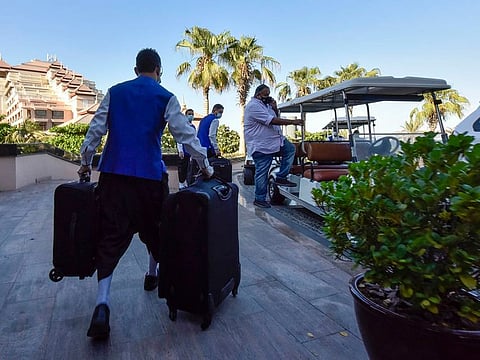December 2 holiday break gives UAE hotels their biggest boost this year
Staycation demand pushes National Day weekend numbers well past 70%

Dubai: The UAE’s hotel occupancy rates have finally pushed past the 50 per cent mark since the pandemic… and chances are it will stay at these levels over the next 15-30 days.
Between November 30 and December 6, Abu Dhabi witnessed the highest occupancy rates at 69 per cent, followed by Ajman (66.5 per cent) and Dubai (65.8 per cent), according to data from the hospitality consultancy STR.
The boost in demand has been felt across the emirates, with Fujairah properties recording 62.4 per cent, Sharjah at 53.9 per cent, after the emirate rolled back restrictions on conferences and hosting of weddings, and Ras Al Khaimah at 52.5 per cent.
Also Read: Dubai's next skyscraper nears half-way mark
Staycation driven
Much of it is demand generated by the staycation offers hotels put out for the extended December 2 National Day break.
“The UAE is traditionally one of the strongest performance markets in the world,” said Philip Wooller, STR’s area director for the Middle East/Africa. “Therefore, we expect the region to continue showing occupancy increases during the typically strong winter season, especially after the recent announcement of a UK-UAE travel corridor.”
On December 2, hotels in the country posted 73.5 per cent occupancy - the highest daily level since February 28. Abu Dhabi’s daily hotel occupancy shot up to a high of 82.3 per cent, while Dubai improved to 70.3 per cent that same day.
In the groove
Some hotel industry sources say they are also seeing initial signs of demand from Israel, now that regular flights have commenced. The budget airline flydubai has already launched services and will be joined by El Al from next week (December 13).
Back to business
“Abu Dhabi and Dubai tourism organizations as well as Etihad and Emirates airlines have done a phenomenal job in preparing the way for international guests to return,” said Wooller. “While leisure demand continues to strengthen, the next phase is the prominent return of corporate business, followed by group demand and events as we’ve seen this week with the return of Gitex and ATM (Arabian Travel Market) in May.
“International travel has been in the crossfire of the pandemic, but the UAE has done a fine job in generating domestic demand and staycations to move the occupancy line in the right direction.”
A step by step approach
The five ways by which governments could stimulate the air travel market without adding to airlines' debt load: * Temporary waivers or suspensions of government charges, taxes and fees to airlines and passengers will reduce flight costs and lower travel costs for passengers; * Route subsidies for flights to local or regional destinations to support connectivity for rural communities and business; * Financial incentives in the form of rewards for operating flights, or seats flown, which can support airlines while load factors or yields are too low; * Advance ticket purchases that governments can use for future trips or distribute to the traveling public in the form of vouchers to support travel and tourism; and * Passenger travel subsidies in the form of vouchers for passengers or as a percentage cash-back on overall travel costs. - IATA (International Air Transport Association)
Sign up for the Daily Briefing
Get the latest news and updates straight to your inbox







